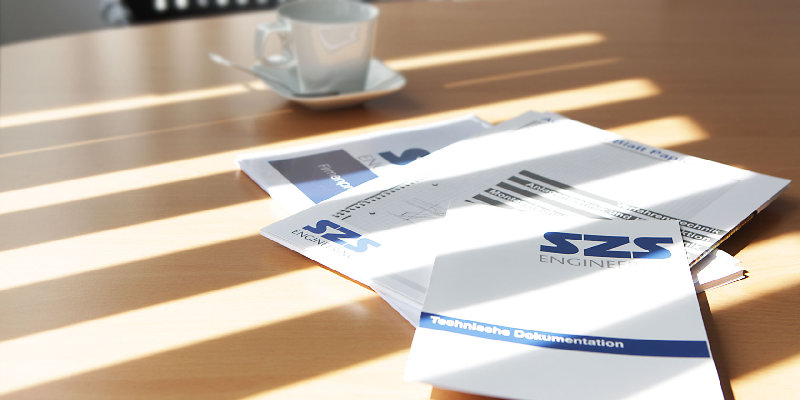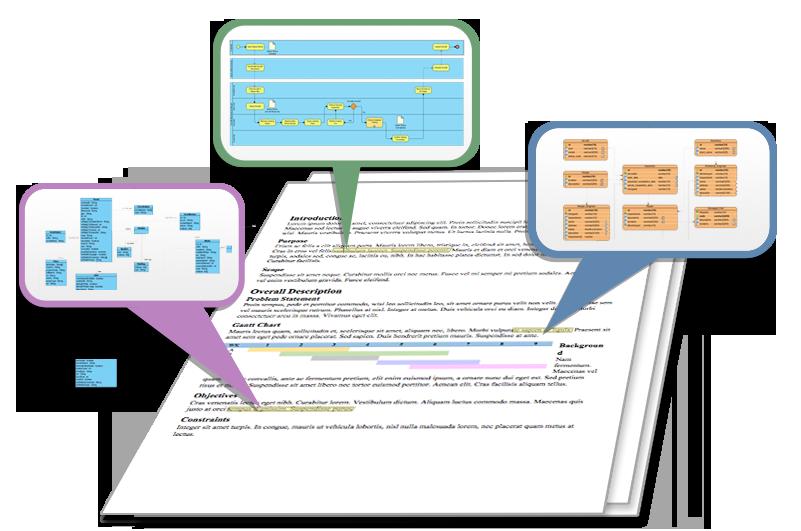The official involved in the organization and control of the list of documents should know what design stages and types of documentation exist, as well as how such documents are considered. Most often, the justification of projects is carried out by companies involved in the construction, reconstruction of residential and non-residential buildings. But some types of documentation are used in other areas of the economy, for example, in IT companies or audit firms.
The concept
A project can be called a set of information documents that are being prepared at the stage of its creation. Here it is necessary to carry out a certain sequence of actions and processes, as a result of which a prototype of the required final object is created.
Accordingly, for this purpose, special calculations of an economic and technical nature should be made, models, explanatory notes, drawings, diagrams developed.
Prior to the entry into force of the Decree of the Government of the Russian Federation of February 16, 2008 No. 87, it was stipulated that certain stages must be adhered to in the process of project development. First, it was necessary to prepare a justification for technical and economic indicators, then to complete the project itself. Currently, two main concepts are used: working and project documentation.

What is: essence and definition
Design documentation is a certain set of documents that appear as a result of the construction plan of an object, its reconstruction or repair. It all starts with a sketch - a diagram that gives an idea of the types of work that will need to be done and how to do it. In fact, a sketch is needed to coordinate project activities with management, investor, and government.
Based on Article 48 of the Town Planning Code of Russia, project documentation is a specific set of documents that contain a list of information in the form of text records, diagrams and maps. Such materials indicate the features of structural, architectural, engineering, technological solutions, in which it is supposed to carry out the relevant reconstruction or construction of buildings or their parts. The same applies to the overhaul of structures in the case when it comes to work in which there is an impact on the structural elements and structures of the object. At the same time, the characteristics for operational safety and reliability of the construction object can be changed.
Project documents relating to certain types of work affecting the operational safety of the facility are permitted only to legal entities or individual entrepreneurs who have the appropriate permission, confirmed by a certificate or license.
The list of works affecting the safe operation of capital construction facilities is indicated in the regulatory document: Order of the Ministry of Regional Development dated 12.12.2009 No. 624. In general, any person can prepare project documentation, most often on a contract basis. In this case, the contractor is responsible for compliance with technical regulations.

Differences between working and design documentation
There are differences between the concepts of design and working documentation:
- the main difference is that the design documentation studies more questions about future construction;
- the constructed facility must fully comply with the provisions of the design documentation;
- if the full detailing of the phased construction, defined in the main project, is sufficient for the further implementation of the construction process, then by the decision of the customer there is no need to create additional working documentation;
- with the beginning of the simultaneous development of design and working documentation, it is necessary to pass an initial check by state expertise;
- a two-stage project provides for the development of working documents only after its official approval;
- project documentation is the legal basis for issuing an official building permit;
- the detailed content of the working documentation is set by the client;
- further creation of design documentation is not required for seasonal repairs or for the necessary overhaul.

Types of Documentation
A typical classification of design documentation includes:
- A master plan that defines the image of the entire construction site, which shows the location of objects under the project along the contours and reflects the landscape design.
- General drawings: schemes for facades, floor plans, as well as transverse and longitudinal sections of buildings. They are indicated by the location of the equipment, utilities, their mutual alignment, marking, as well as dimensions.
- Drawings of parts that are performed for complex assemblies. In such drawings, dimensions are shown for parts and elements of a building or structure, their conjugation, cross section.
- Project passport with basic technical indicators.
- Explanatory note containing information about the projected object, information about its application, appearance, device inside; reports on the most characteristic features of this facility, its main technical indicators are given, the purpose, internal structure and operation of individual parts are indicated and design features are described. In addition, the explanatory note explains the economic, social and other conditions and prerequisites for creating the object, arguing the choice of this option.
- Calculations by parameters. They are made on the basis of using the achievements of physicochemical, biological and other branches of science.
- Assessments that are fundamental.
In addition, for a more perspective display of the project, the facade drawings are made in color.

Main sections
The structure includes 13 approved stages, which reflect all the requirements for sections of the design documentation:
- explanatory note;
- land allocation planning;
- architectural solutions;
- spatial planning and structural solutions;
- data on utilities;
- description of the process of organizing construction production;
- dismantling of capital construction facilities;
- labor protection and safety;
- Fire safety;
- facilities for people with disabilities;
- energy efficiency and equipment with energy metering devices;
- assessment documents;
- other necessary materials.
However, this is not a complete list.
As additional sections of the design documentation, you can use:
- letters of permissive town-planning municipal committees;
- design tasks;
- technological tasks;
- inventory plan of surrounding buildings;
- reconstruction drawings;
- baseline survey results;
- recommendations in the field of civil defense and emergency situations.
Each section is carefully worked out with the support of the required calculations.
Government Decision on sections of project documentation No. 87
This document, adopted on 02.16.2008 (in the current edition of 04.21.2018), is characterized by the following main points.
Decree No. 87 “On the composition of sections of project documentation and requirements for their maintenance” has two sections, the first of which regulates requirements for non-linear objects (buildings, structures), and the second covers information for linear infrastructure objects (roads, railways, power lines and etc.) It clearly states what applies to certain types of objects.
The decree on the composition of sections of project documentation provides a list of objects that require the development of a number of sections and for which this is not required.
For example, the formation of budget documentation is carried out for objects that are financed from the budget. If the object is commercial, then the construction assessment is carried out at the request of the customer.
The composition of the sections of design documentation for 87 resolution is described in sufficient detail. The basic requirements for its content, on the basis of which the work is performed, are also clearly stated.
The design documentation for each section consists of a graphic and text part. The document lists the necessary places that should be reflected in the graphic part in the form of diagrams, drawings. The text part of the sections of the design documentation 87 of the resolution describes a number of parameters. Among them can be noted: calculations, justifications and criteria, which must be necessarily reflected.
Sections of project documentation in the resolution are closely related to a number of articles of the Town Planning Code and regulations of each city or municipality.

Development
Existing SNiP standards regulate the development, coordination and approval of sections of project documentation according to existing standards.
For structures of a mass nature, as well as other technically simple objects, a working draft can be developed on the basis of justification plans for construction.
The main document that regulates the relations and obligations of the parties is the contract concluded by the customer with the engineering firms. They are directly involved in the development of project documentation. An integral part of the contract should be the design assignment.
The development of sections of project documentation is carried out if there is agreement on the chosen location of the object on the basis of the approved justification of investments in construction or other preliminary materials.
The choice of a developer is most often carried out on a competitive basis, including through the conclusion of contracts.
The procedure for organizing and conducting a tender for design work is established by the investor in accordance with the Regulation on Contract Trading in the Russian Federation, a number of methodological recommendations approved by law.

Working documentation as part of the design
The stages of work necessary in a particular case are determined by the customer and the designer in the contract. They are part of the sections of the design documentation.
Reference documents are not part of the working documentation and can be transferred to the client, if provided for in the contract.
The content of the sections of the design documentation regarding the use of working documents requires the following source materials:
- calculation of investment justifications;
- approval of the location of the facility from the authorities;
- land selection act;
- architectural planning task;
- opportunities and technical conditions for connecting the designed facilities to power sources, utilities and communications;
- information about discussions with the public regarding decisions on the construction of the facility;
- basic data on equipment, including individual production;
- data on completed R&D;
- documents from the investor, valuation acts and decisions of municipal authorities on compensation for destroyed buildings;
- materials from the administration and state oversight bodies regarding the project environment and the environment;
- information on engineering surveys, drawings of measurements of buildings and structures existing at the construction site;
- drawings and characteristics of the company's products;
- tasks of developing tender documentation;
- conclusions and materials drawn from a survey of existing industries, structures of buildings and structures.
Development management
At each stage of work, a cost estimate is compiled for the composition of the sections of the design documentation.In large foreign projects with an increasing degree of accuracy, at least four types of estimates are compiled:
- preliminary assessment aimed at studying the viability of the project with a margin of error of 25-40%;
- primary, with the aim of comparing planned costs with budget allocations (error - 15-25%);
- indicative, designed to prepare a project financing plan with an acceptable accuracy of 10-15%;
- final, with the aim of conducting tenders with a margin of error of 5-6%.
The sequence of design work:
- selection of a design company, signing of contracts for the selected designer based on the results of the competition;
- planning and evaluation of work and services;
- proper design and approval of documentation.
Organizational forms of design firms are very diverse:
- Design and construction companies that carry out a full range of design, assembly, construction and commissioning.
- Design institutes that carry out all the necessary work and solve the tasks of planning development areas. Typically, such institutions specialize in industry.
- Design institutes specializing in technology. Such institutions can be divided into three types: specializing in the initial stage of the project; providing multifaceted services to customers who need help with complex and special engineering issues; developing organizations and construction technologies.
The client must conclude an agreement with the licensor - a legal entity or an individual with the exclusive right to industrial use of technology for the project.
There are three possibilities for choosing a design company by the customer:
- Providing services of interest as needed. In this case, the client uses the services of the project company on the basis of a special agreement without a tender.
- Closed negotiations. If the design company is already doing work for the client, then it is entrusted with preparing a proposal for a new project, conducting an examination of these proposals and concluding an additional agreement to the contract.
- Competitive methods.
The functional responsibilities of design firms are divided into two parts:
- Standard, which include: preliminary design, design, development of assessments, field supervision.
- Additional, including: preparation for participation in tenders and assistance in their conduct; project analysis; development of investment feasibility studies and feasibility studies; participation in project management; preparation of financing, group functions.

Project Manager Functions
At all stages of the development of documentation, the project manager plays a leading role. In a government decree on the composition of sections of project documentation, the functions of the manager are clearly defined. During the design process, the project manager performs the following tasks:
- audit of compliance with the volume and terms of work with the necessary minimum;
- selection and involvement of leading engineering specialists for the project;
- coordination of their activities;
- determining the rational start of the date to avoid premature implementation;
- adjustment of the number of employees;
- control over changes in the project;
- control of factors, conditions and documents affecting the cost of work;
- ensuring the minimum range of products used.
Depending on the scope and complexity of the project, the functions of a manager can be assigned both to the manager of the entire project, and to a specially appointed project manager working in a team under the supervision of the general director.
Design automation
The provision on sections of project documentation involves the introduction of process automation.
Many foreign and domestic design firms have moved from the computerization of individual and most labor-intensive types of work to computer-aided design (CAD), which covers the entire process of creating a project.
However, the creation of CAD is preceded by an in-depth analysis of financial indicators. It is more profitable for small and medium-sized companies to use the services of external specialists than to create their own system with specialist personnel.
Key issues to be addressed when implementing CAD include:
- adaptation of the organizational structure of the company to the requirements of CAD;
- selection of software and calculations, taking into account the fact that they are updated every 5-6 years;
- decision on the structure used in the data system.
In general, the data includes information on the specific consumption of materials, cost, technology, construction time, as well as standards and typical design decisions.
In many countries of the world, CADAD is working effectively - a universal system with CAD / CAM elements of the type of artificial intelligence.
Conclusion
The preparation of project documentation must be treated with special care, and if necessary, hire specialists in this field. The project documentation, the composition and contents of the sections are practically guaranteed success in the implementation of the entire project as a whole, with the right composition.
